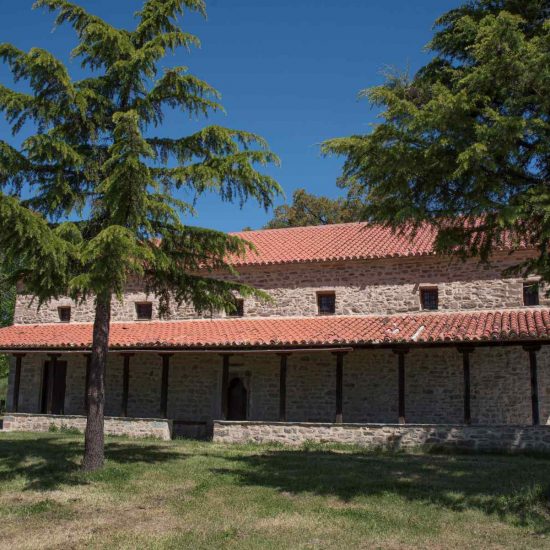Church of St. Demetrios (Mavranaioi)
per person
The church of St. Demetrios in the settlement of Mavranea was rebuilt in 1817 based on the testimony of two inscriptions in stone, on the outside of the arch and on the lintel of the main entrance to the south wall. It belongs to the three-aisled vaulted basilica type with a multifaceted external apse and a raised narthex-gynaeconite to the west, which is not now preserved. The open portico (loggia) to the south is later. The main entrance of the temple, in the middle of the south wall, has a stone carving in the shape of a human. The building is covered with a pitched roof and is built with coarsely chipped domes. The arch is built with great care with horizontal cornices and half-columns at the edges, while in its upper part a decorative zone is formed from embossed slabs with Islamizing arches.
The church preserves a sigificant decoration in the sanctuary and in the eastern part of the main church. There are two phases of mural painting. To the initial phase belongs almost all the murals of the monument, which bear several similarities with artworks of Samaritan painters and could be dated to the second quarter of the 19th century. The representation of Saints Demetrius and George in a shallow niche above the doorway of the main entrance belongs to the same phase. The second phase of mural painting process dates back to 1887 and includes individual representations covering the older layer. The ornate wood-carved iconostasis of the church dates back to 1818. The despotic icons of the iconostasis were stolen in 1993. Parts of the wood-carved episcopal throne have been used for the construction of the modern pulpit.
Source/References
Accessibility: Due to a short staircase the church is not accessible for those in a wheelchair or with mobility difficulties.


